Prkca
-
Official Full Name
protein kinase C, alpha -
Overview
Protein kinase C (PKC) is a family of serine- and threonine-specific protein kinases that can be activated by calcium and the second messenger diacylglycerol. PKC family members phosphorylate a wide variety of protein targets and are known to be involved in diverse cellular signaling pathways. PKC family members also serve as major receptors for phorbol esters, a class of tumor promoters. Each member of the PKC family has a specific expression profile and is believed to play a distinct role in cells. The protein encoded by this gene is one of the PKC family members. This kinase has been reported to play roles in many different cellular processes, such as cell adhesion, cell transformation, cell cycle checkpoint, and cell volume control. Knockout studies in mice suggest that this kinase may be a fundamental regulator of cardiac contractility and Ca(2+) handling in myocytes. [provided by RefSeq, Jul 2008] -
Synonyms
PRKCA;protein kinase C, alpha;AAG6;PKCA;PRKACA;PKC-alpha;protein kinase C alpha type;PKC-A;aging-associated gene 6
Recombinant Proteins
- Human
- Mouse
- Chicken
- Rhesus macaque
- Zebrafish
- Sf9 Cells
- E.coli
- Mammalian Cells
- Insect Cells
- HEK293
- Sf21 Cells
- GST
- His
- S
- Non
- Avi
- Fc
- DDK
Background
What is PRKCA Protein?
PRKCA, known as Protein Kinase C Alpha, is part of the PKC family coded by the PRKCA gene and depends on calcium for its activation. This protein plays a part in various cell activities like adhesion, transformation, and cell cycle checkpoints. This enzyme, which gets switched on by calcium and diacylglycerol, plays a big part in managing how cells grow, die, change, and move. It’s a key player in cancer progression, heart muscle expansion, forming blood vessels, how platelets work, and inflammation. PRKCA influences the ERK1/ERK2 cascade and protein phosphorylation. In heart cells, it manages contraction and calcium usage, making it essential in cellular signaling and physiological functions.What is the Function of PRKCA Protein?
PRKCA protein, also known as Protein Kinase C Alpha, is a calcium-dependent serine/threonine kinase encoded by the PRKCA gene. It plays numerous roles inside cells, such as regulating growth, death, differentiation, movement, and sticking of cells. It’s involved in cancer development, heart muscle enlargement, formation of new blood vessels, platelet function, and inflammation. PRKCA achieves these by directly phosphorylating target proteins like RAF1 and BCL2 or activating signaling cascades involving ERK1/2. In tumors, PRKCA can act as a promoter, linked with aggressive cancer types like gliomas and breast cancer. In the heart, it mediates growth of new heart cells and can lead to heart failure when overstimulated. It’s also vital for blood vessel formation and maintaining heart muscle function through phosphorylation of cardiac proteins.PRKCA Related Signaling Pathway
PRKCA, or Protein Kinase C alpha, is a calcium and diacylglycerol-dependent serine/threonine kinase involved in regulating cell growth, apoptosis, differentiation, migration, and adhesion. It plays roles in tumor development, heart muscle hypertrophy, blood vessel formation, platelet function, and inflammation. PRKCA works by phosphorylating target proteins like RAF1 and BCL2 or activating signaling cascades such as MAPK1/3 (ERK1/2). It also influences gene expression via pathways like MAP kinase activation of Elk-1 or through NF-κ-B release, which enters the nucleus to activate gene transcription. This protein is crucial in various physiological and pathological processes.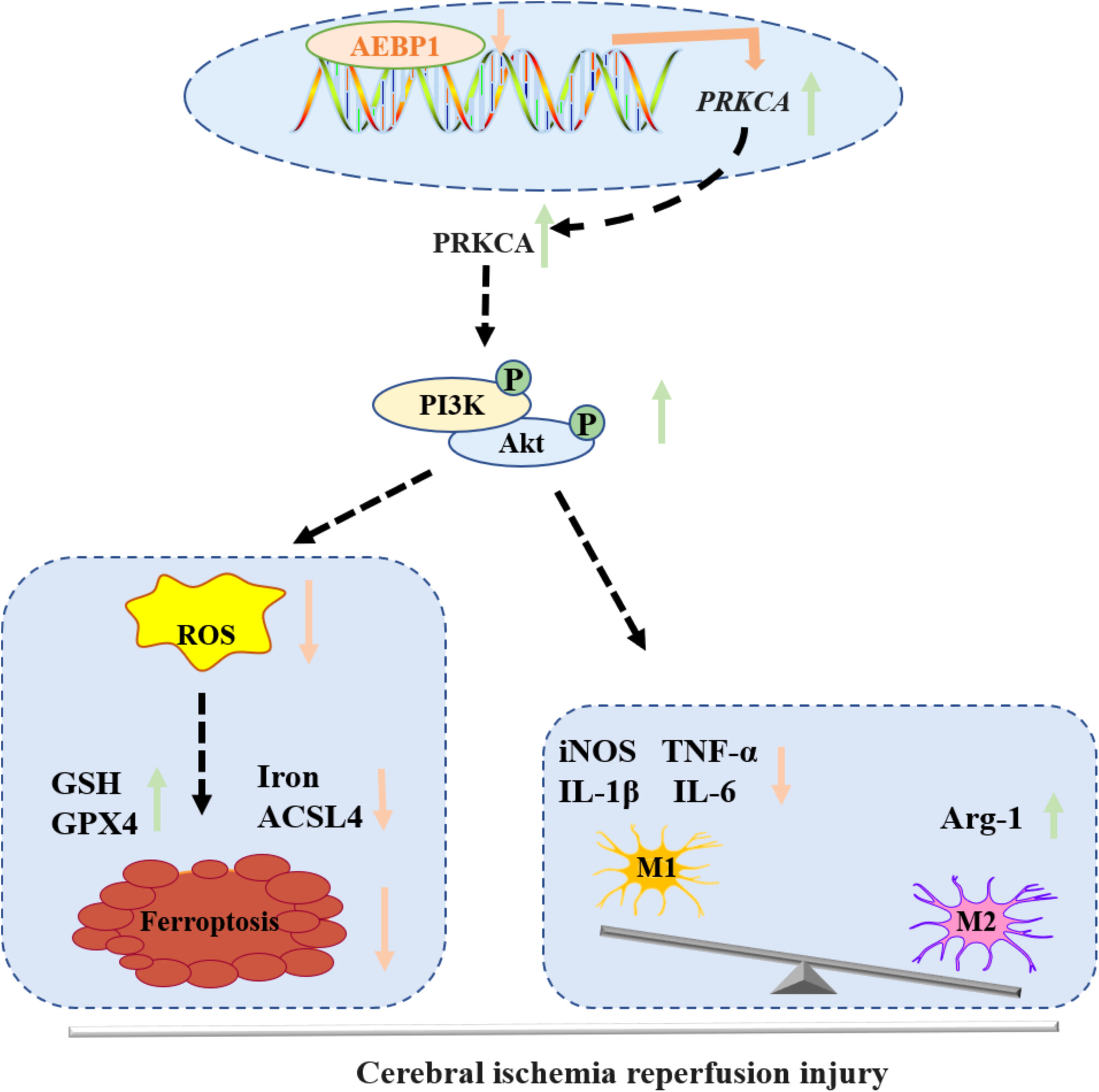
Fig1. Proposed mechanism of AEBP1-mediated beneficial functions following cerebral ischemia/reperfusion injury. (Yafen Zhang, 2024)
PRKCA Related Diseases
The PRKCA gene codes for Protein Kinase C Alpha (PKCα), a key player in various diseases. It’s linked to conditions like dilated cardiomyopathy, high-grade gliomas, large-cell carcinoma, and cancers of reproductive organs. Its role in lung cancer’s resistance to cisplatin has been highlighted, showing changes in PRKCA levels closely tie to patient outcomes. Variations in the PRKCA gene may also affect the risk of ischemic stroke and coronary disease. In pregnant women with diabetes, abnormal PRKCA might be associated with neural defects in newborns, suggesting its crucial involvement in these diseases.Bioapplications of PRKCA
Recombinant PRKCA (Protein Kinase C Alpha) protein is used widely across research, industry, and medicine. In research, it’s a key player in processes like cell growth and movement, especially linked to cancer, heart hypertrophy, and inflammation. In industry, it’s a target in drug development for addressing diseases it’s connected to. Medically, PRKCA’s roles in conditions like cancer and cardiovascular diseases make it a focus for treatments and diagnostics. So, recombinant PRKCA is crucial for understanding and tackling various health issues.Case Study
Case Study 1: Pham TND. et al. BMC Cancer. 2017
Even with progress in breast cancer treatment, metastasis remains lethal. Tumor cell movement, key to metastasis, is influenced by factors like PKCα, linked to poor outcomes. This study focuses on how PKCα drives cell migration in breast cancer. Techniques like Oncomine™ analysis, Western blotting, and migration assays reveal that PKCα and FOXC2 suppress p120-catenin, disrupting cell stability and aiding migration. Blocking PKCα or FOXC2 can restore p120-catenin, stabilize cells, and reduce cancer spread.-
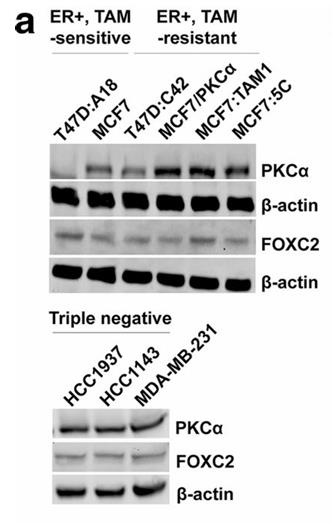 Fig1. Expression of PKCα and FOXC2 in a panel of breast cancer cell lines.
Fig1. Expression of PKCα and FOXC2 in a panel of breast cancer cell lines. -
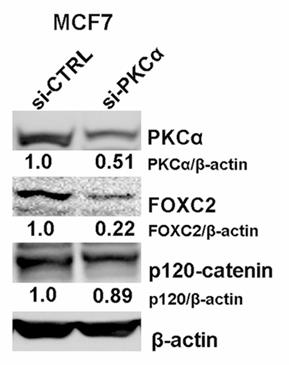 Fig2. Expression of FOXC2 and p120-catenin protein upon PKCα knockdown in MCF7 cells was determined by Western blots.
Fig2. Expression of FOXC2 and p120-catenin protein upon PKCα knockdown in MCF7 cells was determined by Western blots.
Case Study 2: Sun T. et al. Heliyon. 2024
Cisplatin is a common treatment for lung cancer, but resistance often develops. We examined gene expression from resistant and non-resistant cancer cells, revealing significant changes in pathways like Rap1, PI3K/AKT, and MAPK. Key players identified were PRKCA, DET1, and UBE2N. PRKCA stood out due to its impact on patient survival rates and strong correlations with genes and proteins linked to cancer. In lab tests, cells with silenced PRKCA showed increased sensitivity to cisplatin, decreased growth, and less movement, also affecting PI3K and ferroptosis-related genes.-
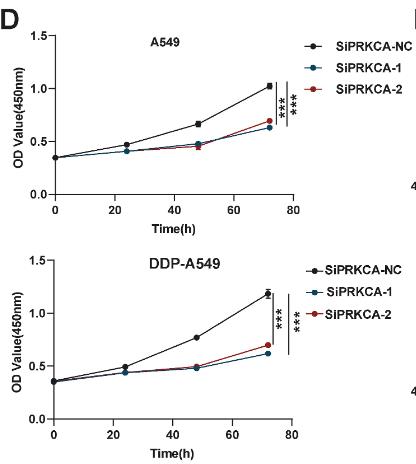 Fig3. PRKCA inhibition decreased the proliferation ability of A549 cells and DDP-A549 cells.
Fig3. PRKCA inhibition decreased the proliferation ability of A549 cells and DDP-A549 cells. -
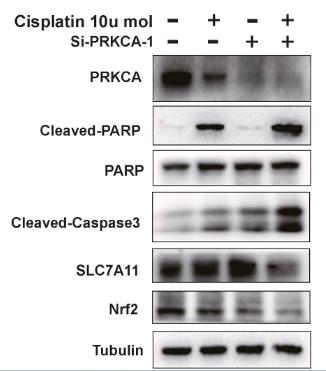 Fig4. Apoptosis-related and ferroptosis-related markers were detected by Western blot.
Fig4. Apoptosis-related and ferroptosis-related markers were detected by Western blot.
Quality Guarantee
High Purity
-
.jpg) Fig1. SDS-PAGE (PRKCA-3962HF)
Fig1. SDS-PAGE (PRKCA-3962HF)
-
.jpg) Fig2. SDS-PAGE (PRKCA-011H)
Fig2. SDS-PAGE (PRKCA-011H)
Involved Pathway
Prkca involved in several pathways and played different roles in them. We selected most pathways Prkca participated on our site, such as MAPK signaling pathway,ErbB signaling pathway,Ras signaling pathway, which may be useful for your reference. Also, other proteins which involved in the same pathway with Prkca were listed below. Creative BioMart supplied nearly all the proteins listed, you can search them on our site.
| Pathway Name | Pathway Related Protein |
|---|---|
| Aldosterone synthesis and secretion | CALML5,PLCB2,ATF4,CREB3L4,ORAI1,NETO2,CYP21A1,AGTR1B,KCNK9,CREB5 |
| Pancreatic secretion | CLCA1,PRKCB,RYR2,CLCA2,CPA3,PLCB4,PLCB2,TRPC1,CA2,CPB1 |
| Cholinergic synapse | CREB3,CHRM5,GNG7,KCNJ4,AKT1,CAMK2B,CHRNA4,PLCB2,MAPK1,CHRM4 |
| mTOR signaling pathway | PRKCBB,PTENA,HIF1AB,TSC1,MAPK3,CAB39L,ULK3,PDPK1B,PRKAA1,PIK3CD |
| Fc gamma R-mediated phagocytosis | PIK3R3,WASF1,PRKCG,SYK,SCIN,ASAP1,PRKCB,AMPH,PIP5K1C,ASAP2 |
| Choline metabolism in cancer | RALGDS,MAPK1,GPCPD1,WASF3,PIK3CA,CHKB,LYPLA1,MAPK3,SP1,PPAP2B |
| Phosphatidylinositol signaling system | INPPL1A,PPIP5K2,CALM2A,IMPA1,PIP5K1C,PIK3CA,PIK3R3,IPMKB,CALM2B,IPPK |
| Non-small cell lung cancer | MAP2K1,RASSF1,MAPK3,PRKCG,ERBB2,RARB,ARAF,STK4,AKT2,RXRA |
| GABAergic synapse | NSF,Adcy4,SLC6A1,GABRB3,GNGT1,GNAI3,GNG13,GNG2,GNB4,GABRE |
-
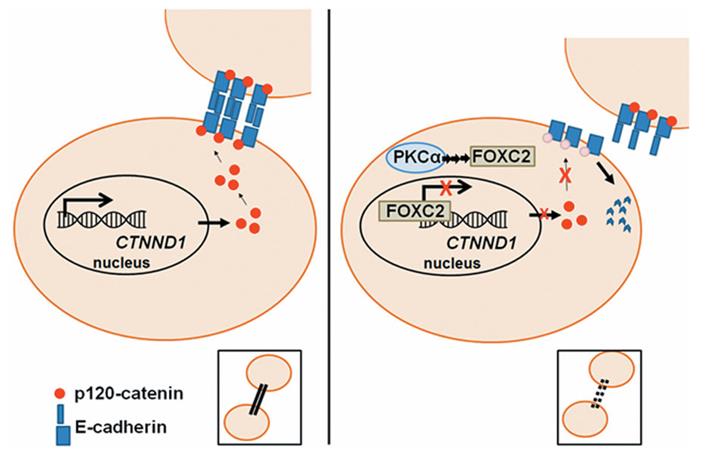 Fig1. Signaling axis mediated by PKCα enhances cellular migration and invasion. (Thao N D Pham, 2017)
Fig1. Signaling axis mediated by PKCα enhances cellular migration and invasion. (Thao N D Pham, 2017) -
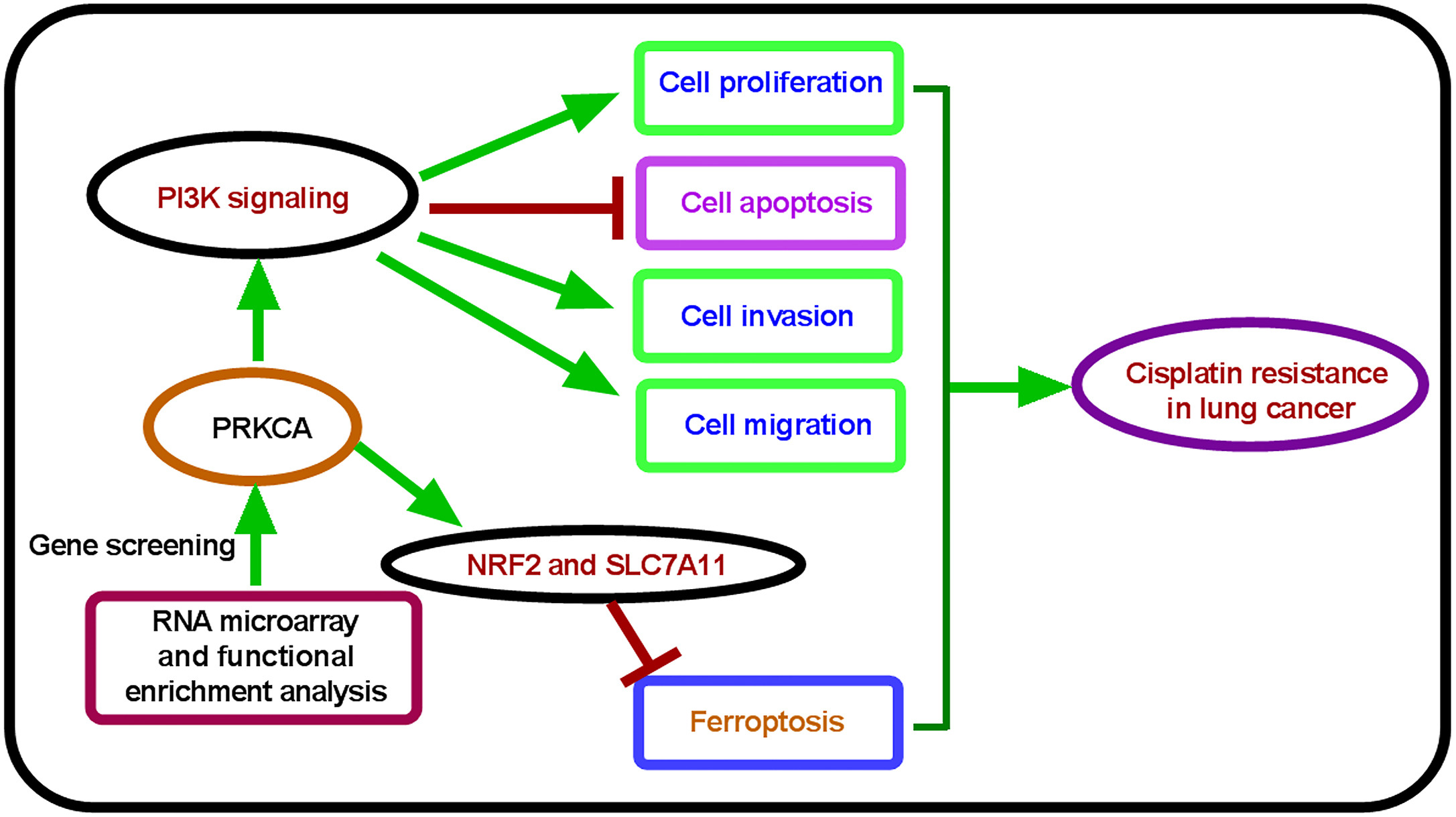 Fig2. Based on RNA microarray and functional enrichment analysis, PRKCA was selected to study cisplatin resistance in lung cancer. (Ting Sun, 2024)
Fig2. Based on RNA microarray and functional enrichment analysis, PRKCA was selected to study cisplatin resistance in lung cancer. (Ting Sun, 2024)
Protein Function
Prkca has several biochemical functions, for example, ATP binding,calcium-dependent protein kinase C activity,enzyme binding. Some of the functions are cooperated with other proteins, some of the functions could acted by Prkca itself. We selected most functions Prkca had, and list some proteins which have the same functions with Prkca. You can find most of the proteins on our site.
| Function | Related Protein |
|---|---|
| zinc ion binding | ZDHHC17,PHF2,GCM1,RORA,CNBPA,L3MBTL4,UBR3,SIRT6,FHL2,ZFP326 |
| protein binding | SPTBN1,BARD1,VPS33A,HIST2H4A,NITR9,LIMA1,F12,CCNG1,UIMC1,EVI5L |
| protein kinase C activity | PRKCBB,PRKCBA,PRKD1,PKN2,PKN3,PRKCDA,PKN1,PRKCG,PRKCQ,PRKCE |
| protein kinase activity | FASTKD2,CDC7,VRK1,MOK,ACVR1,HIPK3,PRKCD,STK25A,CSNK1D,TBK1 |
| protein serine/threonine kinase activity | RPS6KA3B,LATS1,MASTL,SMOK3B,DCAMKL2,PIK3CG,BMPR1A,Aatk,STK3,STK24 |
| enzyme binding | SPDL1,ZNHIT6,PIAS3,PTPN1,RCOR1,DNM2,MAPK8,UGT1A9,PRMT1,RAC1 |
| ATP binding | ABCD1,ATP2B1A,TOR1L3,P2RX3A,CAMK2D,DNAJA2,DHX33,BBS12,TBK1,ICK |
| calcium-dependent protein kinase C activity | CCL3,ALPK2,PRKCG |
| histone kinase activity (H3-T6 specific) | PRKCBB,PRKCB |
Interacting Protein
Prkca has direct interactions with proteins and molecules. Those interactions were detected by several methods such as yeast two hybrid, co-IP, pull-down and so on. We selected proteins and molecules interacted with Prkca here. Most of them are supplied by our site. Hope this information will be useful for your research of Prkca.
EGFR;Sdc4;bzlf1_ebvb9;NCF1;numb;SDC4;ndb25_parsc;inaD;Jak2;GIPC1;EIF2S1;HSP90AB1;UBC;BRAF
Resources
Research Area
Kinases and Phosphatases in Endothelial CellsIntracellular Kinases in the Akt Pathway
PKC Isoforms
Wnt Intracellular Signaling
Intracellular Signaling Molecules in Angiogenesis
Kinases Localized to Focal Adhesions
PKC Family
Related Services
Related Products
References


